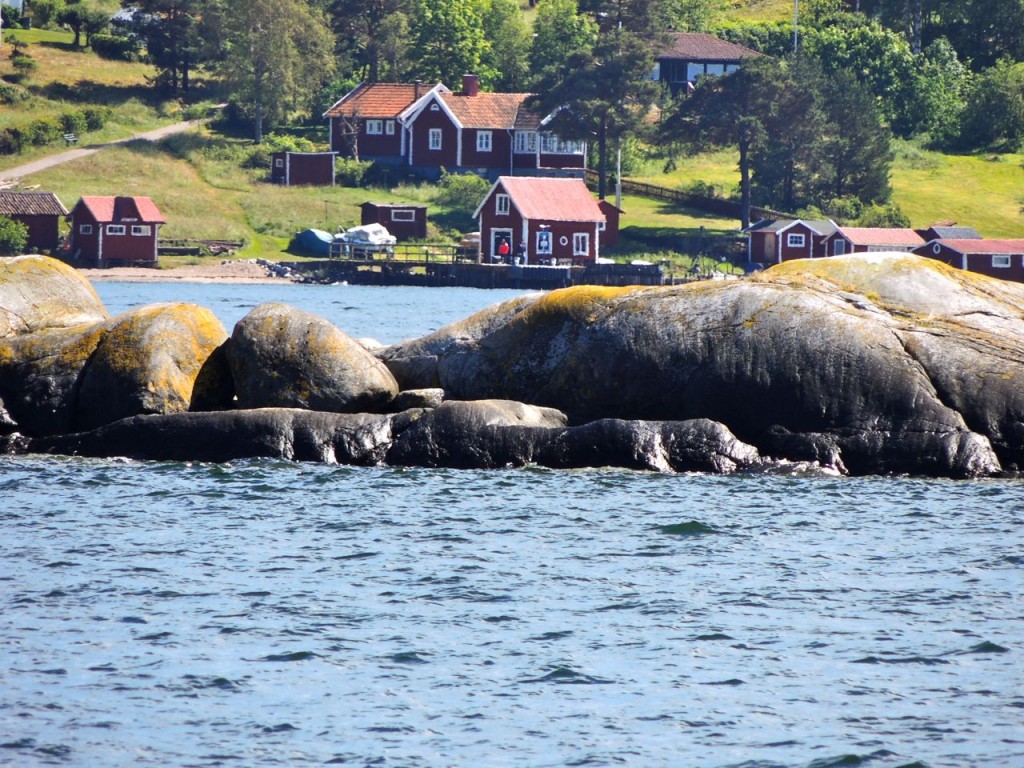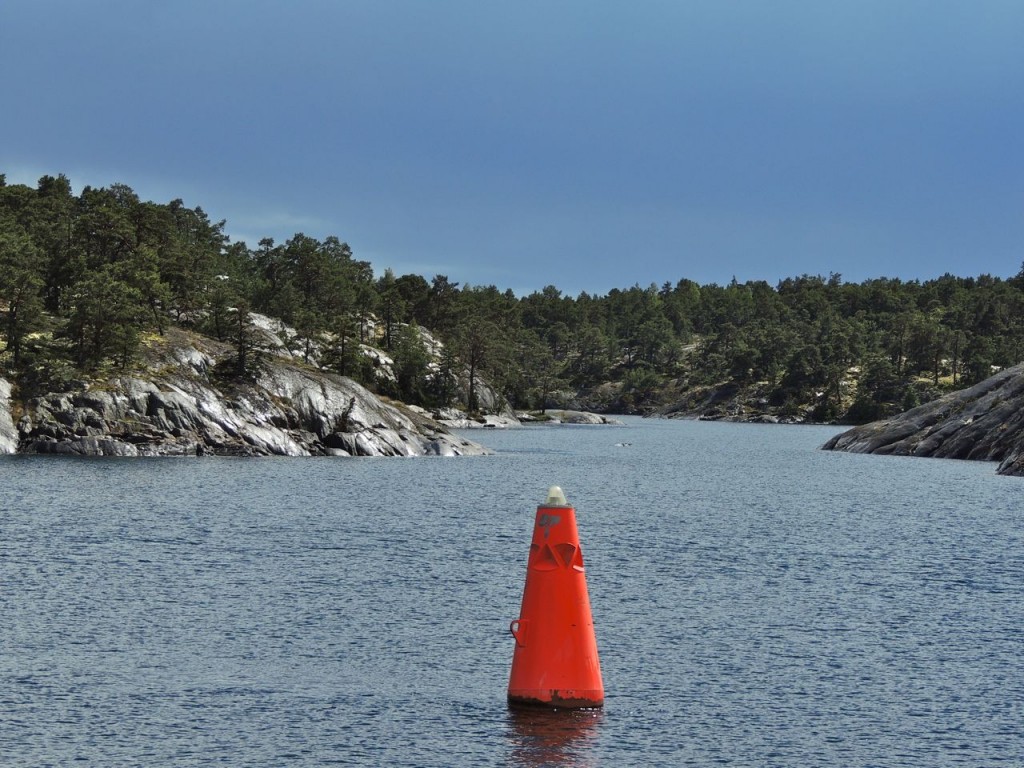22 June 2014. Stockholm’s archipelago. Stockholm sits at a pivot point between the brackish, non-tidal waters of the Baltic Sea and the endlessly branching fresh waters of Lake Malaren, the long fingers of which drain far into the heart of central Sweden. Indeed Stockholm was founded on a small strategic island astride what must have been some furious rapids where the sweet water dropped the last few meters to meet the salty. Between Stockholm and the open Baltic lies a delta of islands scattered like a handful of gravel, some large and populated but many no more than ice-polished rock humps; this is the archipelago, Stockholm’s playground.

On a sightseeing cruise through the islands and out to fashionable Sandhamn, our boat threaded between steep granite walls, across open stretches of lake and along quiet iris-lined backwaters. It was a day of bright sun interspersed with cold rain that came in black, blustery squall fronts; and to judge by the the Swedish reaction, June can be like that. On the return trip, most passengers stayed out of the cold but I found a sheltered corner and, with a couple of cushions under and blankets over me, was quite comfortable. It was during this watch that I spotted a pair of Black-throated Loons with a single chick in their care. I was, I admit, excited and quite unprepared for such a surprise but a quick check of my field guide (which doesn’t get excited about individual species – and nor should it) supported the sighting and also, somewhat dryly, informed me that this species is known by North Americans as the Arctic Loon. My mental Loon-list has now accounted for four (Common, Red-throated, Black-throated and Pacific) of the world’s five species. It may be a long wait for the Yellow-billed Loon which is a bird of northern Russia and Norway.
Maybe it’s just North Americans who get dewey-eyed and wistful at the sight and sound of the loon (by which we usually mean the Common Loon), they are after all the familiar hallmark of northern lakes. I have seen no evidence that Europeans hold loons in any particular esteem, they’re just not a recognizable part of the outdoors; at least not conspicuously so. When they are at their most appealing, both in breeding plumage and and voice, they are far away in remote northern waters, except of course here in Scandinavia. In winter, when loons head for the coastlines of America and Europe, they may appear as no more than a distant grey duck.
A straggling family of Common Eiders was another pleasant surprise. There seemed to be about a dozen of them which may have been a female and well-grown young but it also included a handsome summer-plumage male which may have been the father of the brood. If I sound a little tentative it’s because I’m not sure that the drakes have much to do with parenting once the brood is out of the nest; it may be that my group comprised birds that for one reason or another were non-breeders.
Apart from the loons and Eiders, the bird sightings were in many ways illustrative of how alike are so many European and American species. I noted a couple of Common Sandpipers flitting low across quiet stretches of water and for all the world you’d think they were (our North American) Spotted Sandpipers but without the spots as if out of breeding plumage. The same goes for Grey Herons (like Great-blue), Coots (like American Coot), Cormorants and Nuthatches (all much the same world-wide) and Tree Creepers (virtually identical to Brown Creeper); and so goes birding in Sweden.
